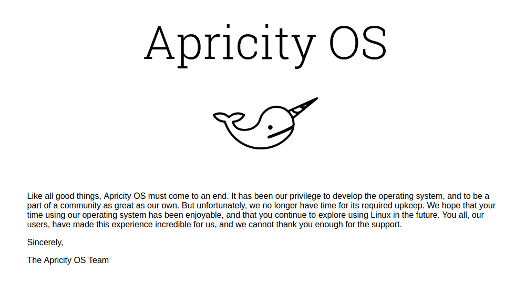OStatic ceased publication without warning or explanation in February. Archphile yesterday announced on Twitter that its “officially dead.”
Ostatic, the once popular website for news and information about Linux and open source, has disappeared from the face of the earth. Also gone, Archphile, an Arch Linux-based distro targeting audio playback quality for ARM devices.
I’ve been meaning to write about the demise of Ostatic for a month or so now, but it’s not easy to put together an article when you have absolutely no facts. I first noticed the site was gone a month or so back, when an attempt to reach it turned up one of those “this site can’t be reached” error messages. With a little checking, I was able to verify that the site has indeed gone dark, with writers for the site evidently losing access to their content without notice. Other than that, I’ve been able to find out nothing.












